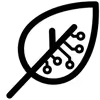SDXL Detector
| Property | Value |
|---|---|
| Parameter Count | 86.8M |
| License | CC-BY-NC-3.0 |
| Architecture | Transformer-based (Swin) |
| Validation Metrics | F1: 0.973, Accuracy: 0.981 |
What is sdxl-detector?
The SDXL Detector is a specialized image classification model designed to distinguish between authentic images and those generated by Stable Diffusion XL (SDXL). Built upon the foundation of the umm-maybe AI art detector, this model has been fine-tuned on a carefully curated dataset of Wikimedia-SDXL image pairs, where SDXL-generated images are created using BLIP-generated captions from Wikimedia images.
Implementation Details
This model leverages the Swin Transformer architecture and has been optimized using AutoTrain technology. It demonstrates exceptional performance with a 97.3% F1 score and 98.1% accuracy on validation data. The model supports both INT64 and FP32 tensor types, making it versatile for different deployment scenarios.
- Improved detection capability for recent diffusion models
- Enhanced performance on non-artistic imagery
- Optimized for SDXL-generated content
- Supports ONNX runtime for efficient inference
Core Capabilities
- High-precision detection (99.45% precision rate)
- Robust recall performance (95.29%)
- Exceptional AUC score of 0.998
- Specialized in detecting SDXL-generated images
Frequently Asked Questions
Q: What makes this model unique?
This model specifically excels at detecting images generated by newer diffusion models, particularly SDXL, while also performing well on non-artistic imagery due to its diverse training dataset from Wikimedia.
Q: What are the recommended use cases?
The model is ideal for non-commercial applications in education and personal use, particularly for detecting SDXL-generated images. However, it may have lower performance on images generated by older AI models like VQGAN+CLIP.







